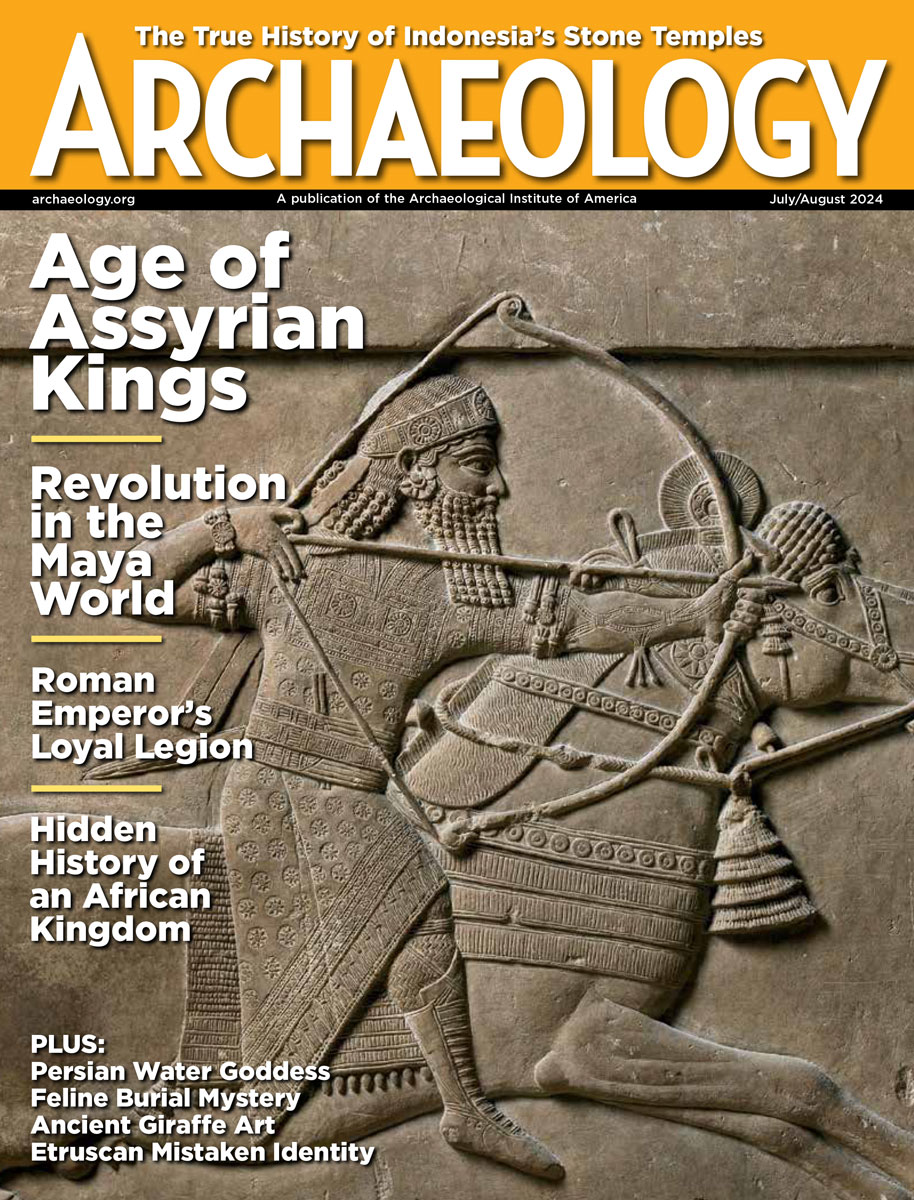Monday, December 22
December 22, 2008
A hoard of gold coins was discovered in a seventh-century building in Jerusalem. “Since no pottery vessel was discovered adjacent to the hoard, we can assume it was concealed inside a hidden niche in one of the walls of the building,” said Doron Ben-Ami and Yana Tchekhanovets of the Israel Antiquities Authority.
Two-million-year-old tools found in a cavern in the Kuruman Hills of South Africa indicate that the site is the earliest-known home of human ancestors, according to a team of researchers from the University of Toronto and Jerusalem’s Hebrew University.  Â
A man was arrested for looting an ancient tribal village site in a California state park after posting a video of the crime on YouTube. “It was a bragging video,” said park ranger Greg Hall. Â
Two South Dakota men have been accused of trafficking in American Indian artifacts stolen from public land. Â
Biological anthropologist Jill Rhodes has examined humerus bones in her quest to find out when modern humans began using long-range projectile weapons, which are thrown overhead. Â
Zahi Hawass, head of Egypt’s antiquities council, announced that two 4,300-year-old tombs have been unearthed near Saqqara. “The discovery of the tombs is the beginning of a big, large cemetery,” he added. Â
An Egyptian sculpture smuggled to out of the country 20 years ago will be handed over to the Egyptian embassy in London. The artifact was recovered in 1999. Â
The German government has suspended its funding of the Ilisu Dam project in southeastern Anatolia because it says the Turkish government has not addressed environmental problems linked to the dam’s construction. Operation of the dam would flood the ancient city of Hasankeyf. Â
Germany also reportedly returned artifacts stolen from Didim to Turkey. Â
Here’s more information on the 500 miniature pots seized from an Italian farmer’s home.
- Comments Off on Monday, December 22
Friday, December 19
December 19, 2008
The story of the discovery of a prehistoric American Indian cremation pit on Ossabaw Island, Georgia, has been picked up by the Associated Press, which has provided more information about the significance of the find. “Burials from the Woodland Period tend to be shallow, bowl-shaped pits with bodies flexed in an almost fetal position on their side. What makes this particular site unusual is that the individual was apparently cremated and then the remains were presumably taken from this pit and interred somewhere else,” said Dave Crass, Georgia’s state archaeologist.
Anthropologist Kieran McNulty and other researchers have used 3D modeling methods to compare the skull of a “hobbit” to a simulated fossil human of similar stature. He concludes that Homo floresiensis may have branched off from Homo erectus, and then undergone a process of size reduction. “I think the majority of researchers favor recognizing this as a new species. The evidence is becoming overwhelming, and this study helps confirm that view,” McNulty said.  Â
The Dakar Rally, which will take place in Argentina and Chile because of security fears in Africa, could damage archaeological sites. “It will be an avalanche of metal, smoke, and roar of motors,” said Norma Ratto, head of the Argentine Association of Archaeologists. Â
The first UNESCO inspection since 2003 of Nimrud, Ninevah, Ashur, and Hatra has found no evidence of recent looting, but considerable evidence of looting in the 1980s and 90s. Â
A volunteer who was sifting dirt removed from Jerusalem’s Temple Mount in 1999 found an ancient half shekel coin, used to pay temple taxes. Â
A mummy from England’s Birmingham Museum and Art Gallery will undergo a CT scan to see if a metal object in his neck caused his death. Other mummies from the museum will also be scanned to learn more about causes of death and burial practices. Â
Two oyster hunters found a shipwreck off the coast of Sri Lanka. They reported it to the authorities, who are conducting excavations.Â
Trained gladiators from Rome’s modern gladiator schools will fight at the Colosseum, according to Umberto Broccoli, head of archaeology at Rome City Council.
- Comments Off on Friday, December 19









